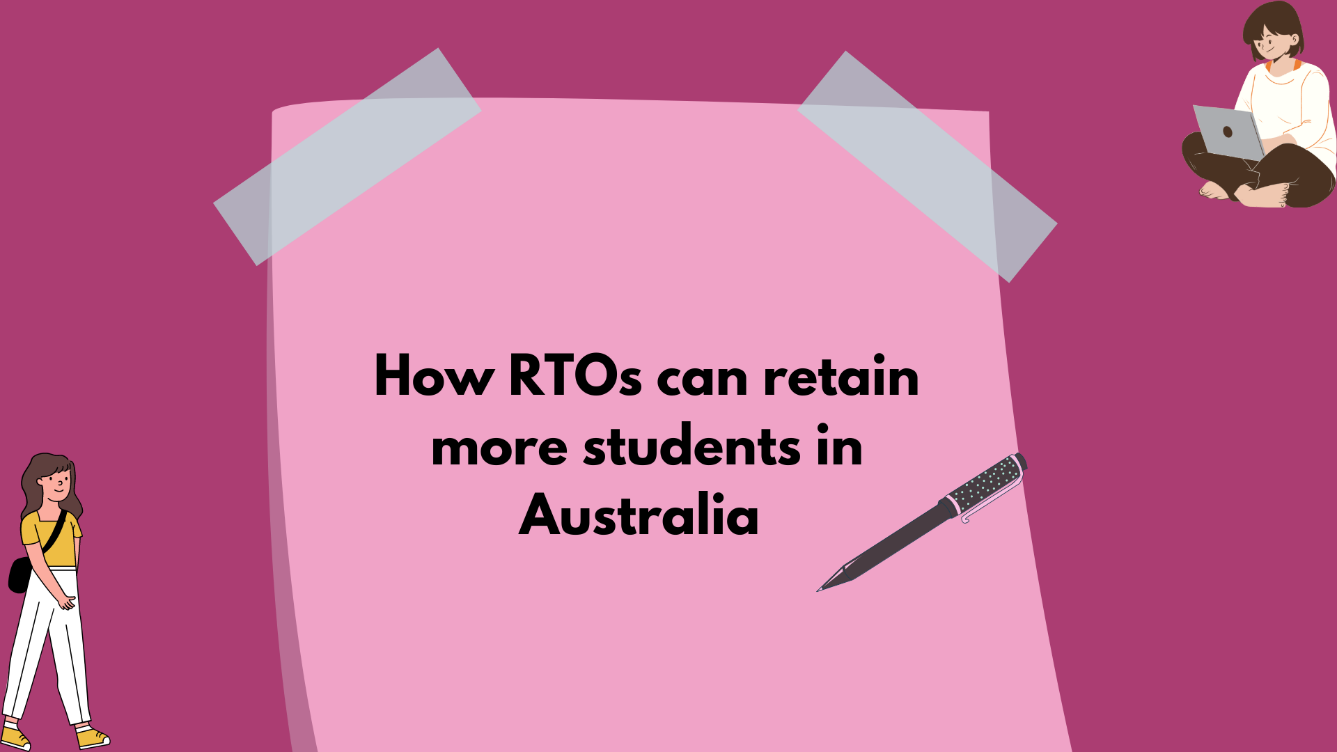Retention of students is a critical challenge for Registered Training Organisations (RTOs) in Australia. In an increasingly competitive and dynamic education landscape, RTOs must employ strategies that not only attract students but also keep them engaged, motivated, and successful throughout their learning journey. Student retention is essential not only for the financial health and reputation of RTOs but also for ensuring learners are able to complete their qualifications and meet the skills requirements of their chosen industries. This article explores several key strategies RTOs can implement to improve student retention rates.
Providing High-Quality Training and Support
One of the most effective ways RTOs can retain students is by delivering high-quality, industry-relevant training. This includes using up-to-date training materials, employing skilled trainers, and ensuring that learning outcomes align with industry standards. When students see that their training is relevant and valuable to their future career prospects, they are more likely to remain engaged and committed to completing their courses.
Additionally, RTOs should provide adequate student support services, such as academic tutoring, career counselling, and mental health support. These services address students’ academic and personal needs, helping them overcome challenges that could otherwise lead to dropout. Having dedicated support systems in place shows students that the organisation is invested in their success.
Engaging Students Through Interactive and Flexible Learning
The adoption of flexible and interactive learning methods can significantly improve student retention. Many students are balancing work, family, and study commitments, and RTOs that offer flexible learning options (such as online learning, part-time courses, or blended learning) are better positioned to meet the needs of diverse student cohorts.
Incorporating interactive and engaging teaching methods, such as group discussions, hands-on activities, simulations, and real-world case studies, can also increase student engagement. When students are actively involved in the learning process, they are more likely to retain the information they are taught and feel motivated to continue their studies.
Building Strong Relationships Between Trainers and Students
The relationship between trainers and students plays a pivotal role in retention. When trainers foster a positive, supportive, and engaging learning environment, students are more likely to feel valued and connected to their studies. A trainer who is approachable, responsive, and genuinely invested in the success of their students can inspire confidence and motivation, encouraging students to stay on course.
Personalised interactions, such as offering regular feedback, acknowledging progress, and providing individualised support, can strengthen these relationships. When students feel that their trainers care about their success, they are more likely to stay enrolled and complete their studies.
Clear Communication and Expectations
Clear communication is key to preventing misunderstandings that could lead to students leaving their courses. RTOs should establish transparent communication channels for students to ask questions, provide feedback, and seek assistance when needed. Clear communication about course content, assessment requirements, timelines, and any changes to the course structure is crucial for setting expectations and avoiding frustration.
Additionally, setting clear expectations from the outset helps students understand what is required to succeed in their training, reducing the likelihood of dropouts due to confusion or lack of clarity.
Creating a Positive and Inclusive Learning Environment
An inclusive, respectful, and welcoming learning environment helps foster a sense of belonging among students. RTOs should implement policies that promote diversity and inclusion, ensuring that students from various backgrounds feel comfortable and supported. Encouraging a collaborative learning culture where students can interact with each other and learn from diverse perspectives also contributes to a positive environment.
Moreover, recognising and celebrating student achievements, whether big or small, can boost morale and encourage students to stay engaged. A sense of community within the RTO can provide students with the emotional and social support they need to continue their studies.
Offer Career Pathways and Industry Connections
One of the primary motivations for students to enroll in RTOs is the desire to enhance their career prospects. To retain students, RTOs should demonstrate how their courses lead to real job opportunities by offering career pathways, industry connections, and job placement assistance.
Building strong partnerships with employers, industry leaders, and professional associations can help provide students with opportunities for work placements, internships, and networking events. When students see that their training is leading to tangible career outcomes, they are more likely to remain committed to their studies.
Monitor Student Progress and Provide Early Intervention
RTOs should actively monitor student progress throughout the duration of the course. Tracking performance can help identify students who may be struggling academically or who may be at risk of dropping out due to external factors, such as personal issues or financial difficulties.
Early intervention is crucial for retaining these students. By reaching out to students who are facing challenges and offering support (whether through academic help, financial assistance, or personal counselling), RTOs can prevent students from disengaging or dropping out.
Implementing Retention-focused Strategies
Retention-focused strategies should be embedded into the overall student experience. RTOs should regularly assess their teaching and learning methods, support services, and overall student satisfaction to identify areas for improvement. Conducting student surveys or focus groups can provide valuable insights into what students need to stay engaged and satisfied.
Additionally, offering incentives such as scholarships, prizes for achievement, or recognition for milestones can motivate students to stay enrolled and work towards completion.
